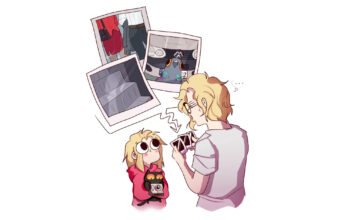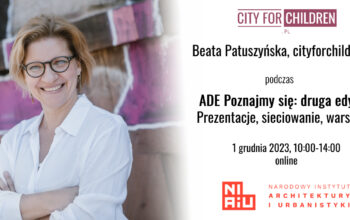Memory in a city
After May in Le Plessis-Robinson, where I was surrounded by a new ‘old town’, in June I went to the CHANGING CITIES V conference. It took place in Corfu town, which made me reflect further on the topic of place, continuity and power and different aspects of memory in urban environment. Memory of the place was also a big topic of the conference itself, with a day session devoted to it.
Erasing memory
Remembering is always a process of choosing, erasing and rewriting. We forget things, they get distorted with our perception or time; our brains decide how and what to store. The same happens in urban fabric. Those in charge choose its components, which need to be remembered or forgotten, preserved or revised. Urban tissue, like history, is written by victors or coincidence or negligence. It follows that urban space, when it is planned, is ideological, as it tells a personalised story based on power.
Apart from obvious war associations, the most brutal example of erasing that I recently encountered, is what happened in Le Plessis-Robinson, where part of the old fabric was demolished and built anew as an ideological claim (I wrote about it in my previous article). The Corfu conference gave me a good label for what happened there – ‘a palimpsest’, a manuscript page to be scraped and used again. I have never before associated it with urban context, but it is a good summary of Le Plessis-Robinson. Another example, this time of a small-scale palimpsest, was presented during the conference. It was a case study of a school, which by nature is a hierarchical and power-based environment, located in Athens. The school wall, which had been covered with graffiti (described by the presenter as ‘vandalism’ and said to destroy the place’s identity) was painted and re-covered with copies of renowned paintings by Matisse, Van Gogh or Seurat, imposing a new ‘civilised’ identity to it.
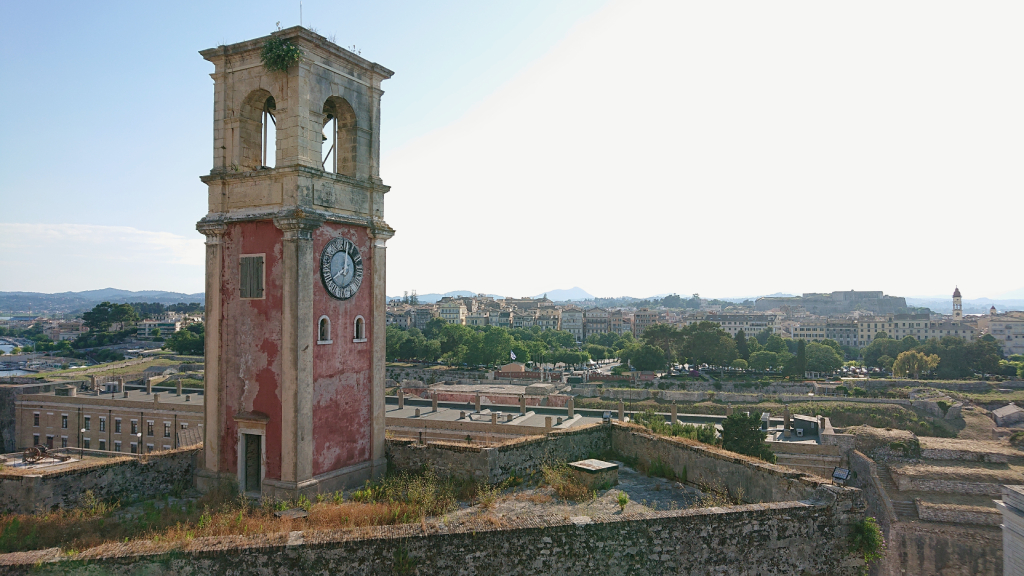
Not all erasing is intentional, it often happens by accident, ignorance or even by mistake. In their conference presentation M. Benissi and K. Moraitis (‘The urban stratigraphy of the subsoil of the Eleonas area as a monument of the ‘Anthropocene’ period in the Athenian landscape’) quoted the story of perennial olive tree, under which Plato was believed to have taught his students. In 1976, after 2,400 years of growing in Athens, it was destroyed in a bus accident and the broken part was transferred to Agricultural University of Athens, where it is exhibited as a symbol of the agricultural era of that part of Athens. Later I found out that the remaining part of its trunk, together with its roots, which were both estimated to weight over 1,000 pounds, survived at the site until 2013 when it vanished and believed to have been stolen for use as firewood.
It reminded me of another example of erasure. ‘Weeds’ was an artistic project telling a story of reinforced settlement after the WWII from the SE border parts of Poland. For ideological reasons traces of human presence were wiped out, with only occasional foundations of houses, wells or roads left until today. The heritage of the place is therefore stored in plants, which carry the history of people, who used to live there, with their occurrence representing a map of non-existing settlements. The artist brought a square of that meadow to Warsaw, where at first it was exhibited in a gallery and then, after planted as a part of big lawn in the city. By mistake it was cut along with the lawn – giving it another, symbolic aspect of re-easing the history again.
Living memory
Corfu is a fusion of styles, of past and present, and of life and preservation. The town has very diverse architecture, with influences of various historical periods, such as the presence of the Venetians (1386-1797) – this period is also visible at the cultural level as Corfiots talk with hints of an Italian accent and the food is a mixture of Italian and Greek and the influence of French (1807-1814) and the British (1815-1864).
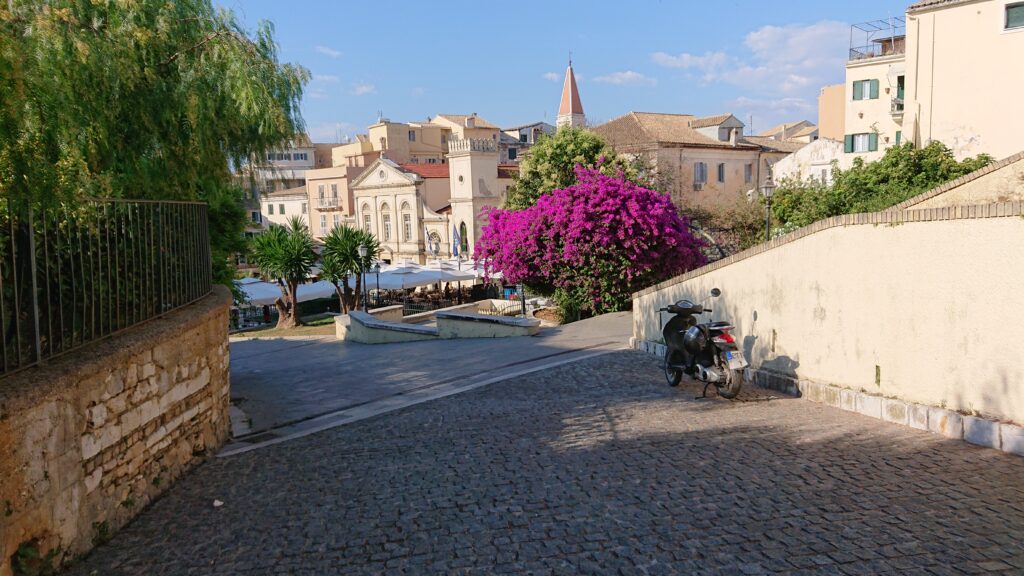
I was amazed by its timeless beauty especially late at night, when old streets were empty, and market stalls folded down. Evidence that the real flavour of the place showed itself when streets are busy during the day and evening, proving that Jan Gehl was right when he pointed out that architecture is made to be lived in and therefore it is a mistake – as often done – to photograph (or in my case: experience) it without people.
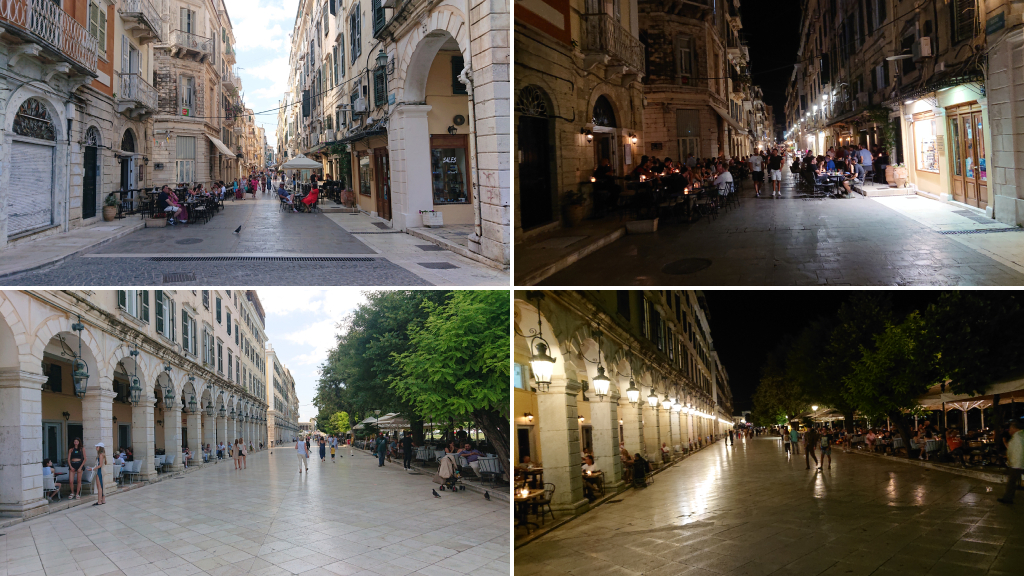
Corfu definitely is a town where people live. They shop at the town market, exercise in a Corfiot Gymnastics Club with its modern sport pitch incorporated into the old walls, and take shortcut through the old walls of the New Fortress as witnessed by engraved Venetian lions. The fortress is also the seat of a primary school – with the entrance reminiscent of an old-style prison, making me think of how the cell-like classrooms looked and if that kind of historic baggage is a gift or a burden.

Living on the verge of past and present definitely has its faults for adults. A lot of buildings are in bad condition, and evidence not only of high maintenance costs, but also a struggle between life and history. As I heard, owners often have to choose between being fined by the city, or preservation authorities – for example either for not renovating a balcony and making it safe for the passers-by, or breaking preservation rules if they do.
Memory also lives in people, which became obvious for me, when talking to Vitaliy, the owner of a restaurant, where we met after our child-related session. Talking of his restaurant’s history he said that ‘he himself was the place’. In the same way Corfu, as any other place, is composed of people, who live there and participate, contributing their own personal stories into a communal one. That is why even the process of erasing the fabric can’t erase memory and the real spirit of the place. Memory is alive, either as a personal phenomenon or communal and it revives itself. I was reminded of that by a tree, which I saw on the photos advertising my Corfu apartment. When I arrived, I noticed everything was the same as on the photo, even the same truck was parked outside the window. But to my regret, the tree was gone. But, after a close examination I located a cut trunk and saw that a new tree started growing already from it, the cut tree becoming its new base.

Reviving memory
Another aspect of memory in urban environment is the tracing and recognising dimensions that got erased. During her presentation (presentation: ‘Urban Synergies in the design process; Place Identity as a catalyst for the formation of space’) Maria Hadijisoteriou spoke of a process of tracing memory while designing Cultural Village of Lempa. She told of her method of mapping the social, physical and cultural layer of the place, which helped her when defining Genius Loci, and allowed to add a new layer to the already complex Greek and Turkish heritage of that Cypriot village, without judging the findings.
New projects or redevelopments are often the scene of commemorating the place’s heritage, like San Giovanni metro station in Rome showed by Marina Pasia (presentation: ‘Memory in Transit. Integrating archaeological heritage into the daily commute’). She explained how it was transformed into ‘museum station’, with an exhibition along it’s passages of artifacts that were discovered during the station’s construction. A typical example of acknowledgment of the past was the town market outside my Corfu window, which was a new development and where remaining of old foundations were exposed next to the entrance.
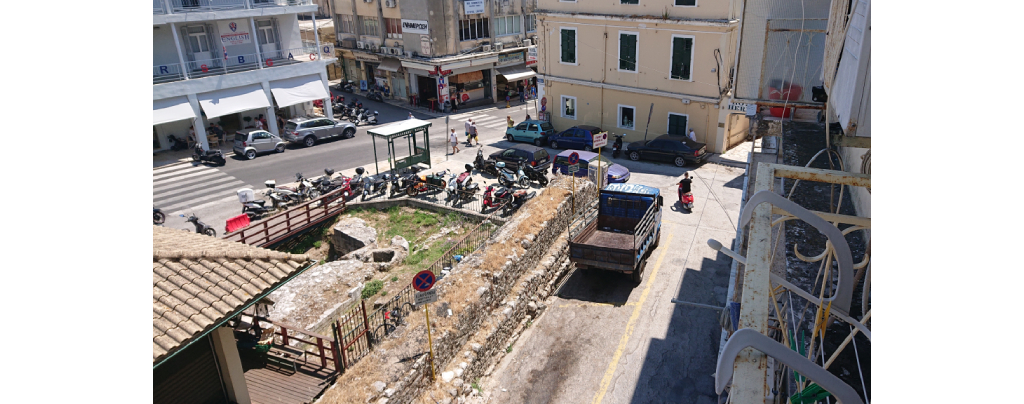
Creating memories
Apart from all memory that is inherent in urban space, cities can also create new memories, both for those who know them well and those who are newcomers and, like me in Corfu, when looking at everything with fresh eyes. Visitors, who get to know the city’s ways and shortcuts, make the place their own for the time of their stay.

Dr. Prof. Fyllio Katsavounidou (who by the way invited me to speak at the conference at the child-related panel that she hosted) gave an example of that during her presentation. She spoke of Tirana, where children, on their birthday can plant their own tree in an Orbital forest – a public park encircling the capital. The park, which is aimed at planting 2m trees, is realised within the framework of General Local Plan 2030 and its role is stop sprawl of the city and give it fresh air. The project, by involving city’s residents, and giving them meaningful experience along with important memories, creates also a sense of belonging, ownership and responsibility for the place.
Corfu also gave beautiful memories. Having chosen the apartment opposite the central market, I became very much part of the place, living in its heart. I gave myself 2 days prior to the conference and I allowed the town to surprise me. In return it offered me much more than I could have expected. The sun was waking me up every day, shining on my face. I could smell fig trees and hear sound of swifts and the melodies of church bells. I also got a welcome present crowning my weekend – an unexpected open-air concert by the philharmonic youth orchestra from Boston in the beautiful scenery and backdrop of the Old Fortress.
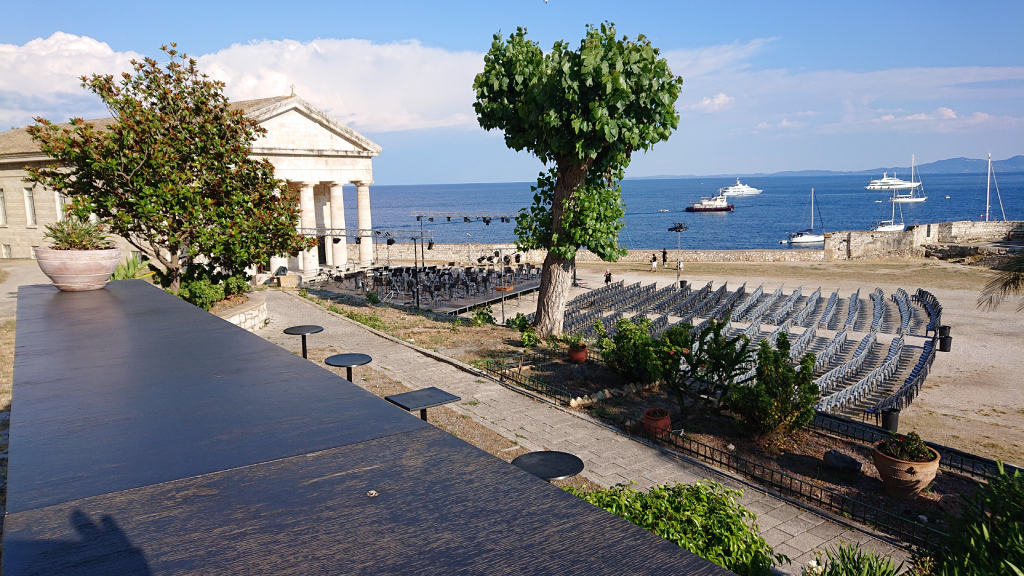
…and waiting for more memories
I plan to come back soon to Corfu for more memories, next time with my two children. I expect the town to surprise me again. I will be older now embodying everything I have experienced during the 3 months between the two visits. There will be different colours, different smells, probably slightly different sounds (are the swallows going to be there still?) and different tastes. Definitely I will experience the place differently, as the energy and perception of the three of us there together is different from being there alone. The personal memory will become family memory and we will add our little bit to the history of Corfu.



